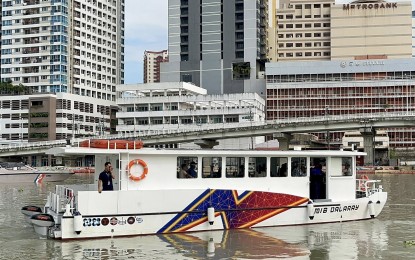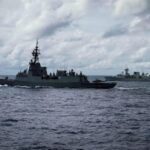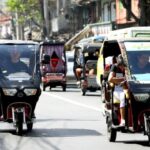MANILA – A new electric passenger ferry (e-ferry) was launched to serve commuters through inland waterways such as the Pasig River.
M/B Dalaray, the country’s first ferry running on electric battery, was designed and made in the Philippines. It is capable of carrying up to 40 passengers and three crew members for up to three hours.
It will begin operations along the Pasig River, traversing the cities of Pasig, Makati, Mandaluyong, Taguig and Manila, in November.
The launch was led by the Department of Science and Technology (DOST), Philippine Council for Industry, Energy and Emerging Technology Research and Development, University of the Philippines – Diliman, and Maritime Industry Authority (MARINA).
The DOST Secretary stated that M/B Dalaray is meant to showcase government initiative on lessening reliance on fossil fuels and reducing carbon emissions.
“This is the product of the greatness, industriousness and unity of Filipinos,” the Secretary said.
The project advocates for a clean, modern and future-ready system of transportation in the Philippines, contributing to the economy through the use of rivers and improving tourism in the Philippines.
“This would greatly ease vehicular congestion and would provide a comfortable journey for passengers,” the MARINA Administrator said.
Pasig River
The Pasig River is a historically significant waterway that flows through Manila, Philippines, serving as a vital artery for transport, commerce, and daily life during the Spanish colonial era. Once a pristine and culturally central river, it became heavily polluted in the 20th century due to industrialization and urbanization. Today, it is the focus of ongoing government and community-led rehabilitation efforts to restore its health and beauty.
Pasig
Pasig is a highly urbanized city in Metro Manila, Philippines, located along the banks of the Pasig River. Historically, it was a significant settlement before Spanish colonization and later became a major province, with its old church, the Immaculate Conception Cathedral, dating back to the 17th century. Today, it is a key financial and commercial hub, home to the Ortigas Center and a blend of modern business districts and historic landmarks.
Makati
Makati is a major financial and commercial hub in Metro Manila, Philippines. Originally a rural municipality, it transformed into a modern central business district in the mid-20th century, now known for its towering skyscrapers, luxury condominiums, and upscale shopping centers.
Mandaluyong
Mandaluyong is a highly urbanized city located within Metro Manila in the Philippines. Historically a rural settlement, it was officially founded as a town in 1841 and saw significant growth after being merged into the metropolitan region. Today, it is a major commercial and residential hub, known for prominent landmarks like the Shangri-La Plaza and the Ortigas Center business district.
Taguig
Taguig is a highly urbanized city in Metro Manila, Philippines, historically known as a fishing village that was a significant part of the Spanish-era “Hacienda de Taguig.” Today, it is a major financial and commercial hub, most famous for being the home of the Bonifacio Global City (BGC), a premier central business district.
Manila
Manila is the capital city of the Philippines, located on the eastern shore of Manila Bay. Founded by Spanish conquistadors in 1571, it served as the center of Spanish colonial government for over three centuries. The city is known for its rich history, evident in the historic walled city of Intramuros, and is today a major economic and cultural hub.
University of the Philippines – Diliman
The University of the Philippines – Diliman is the flagship campus and largest constituent university of the UP System. Established in 1949, it was built to consolidate the various units of the university that were scattered across Manila after the destruction of many campuses during World War II. Today, it is a National Historical Landmark renowned for its academic excellence, sprawling grounds, and iconic landmarks like the Oblation.






